Myths and Invisibles
Recently, in the Indian press, the first data appeared on the EPR of a fifth-generation Russian fighter (recall, India is Russia's partner in the PAK FA program). According to an official statement from the Indian Ministry of Defense, this is an "amazing aircraft."
His ESR - total 0,5 sq. m compared to 20 square. Su-30MKI (probably the maximum ESR values are meant here - for the Su-30 there is an upper limit with a full set of armaments and outboard fuel tanks). If the figures are reliable, the achievement cannot be called brilliant: the minimum ESR of the new fighter is probably 0,1 m - this is the level of Rafale and Eurofighter. By Pentagon standards, 0,1 m is not an indicator. It remains to conclude that, unlike the Americans, our developers have not managed to combine the “classic” stealth layout with decent flight characteristics - and chose the latter. However, the answer to this question we will know soon. However, in comparison with the Su-27 / 30 family of aircraft, this is an impressive progress.
A promising long-range bomber (PAK YES) will also undergo "stealthization". According to the commander of the strategic aviation Anatoly Zhikharev, “the new aircraft will be hardly noticeable, but it is impossible to completely eliminate its visibility for an aircraft of this class. To reduce its effective reflective surface is very possible with the use of new technologies and materials. "
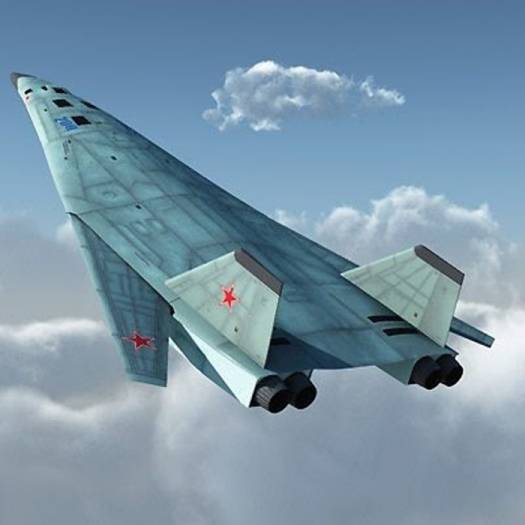
So, there was a strange dissonance. The requirement of stealth has settled in the TTZ of almost all promising combat platforms. Work is underway - and even with some success. Meanwhile, the “public” is firmly stuck at the level of the unforgettable Minister Grachev, who declared the invisibility to be myth a la SDI.
What is the common idea of “stealth”? They are knocked almost out of slingshots - or, which is practically the same, with the help of the old Soviet C-125 complexes. They are seen by ancient long-wave radars. Their use is possible only against the "Papuans", almost unarmed and unable to effectively handle even what is available. Everything as a whole is an expensive soap bubble, no longer needed by the Americans themselves (hence the removal of the F-117 and the limited circulation of the Raptor). In a more advanced form, the same rhetoric looks a little different: stealth is an unhelpful technology, but this direction is far from important, for a combat aircraft, stealth is a minor feature.
The origins of these stamps go back to that distant epoch when customers in uniform discovered that generously funded inhabitants of modern scientific research institutes missed a very promising direction - and this is with a monumental theoretical groundwork in the field of stealth. As a result, the “scientific power” began to make diverse excuses - and succeeded. So, in the middle of 90, Pavel Grachev (obviously, from other authoritative words) stated that the Americans were already disappointed in the stealth technology and were about to refuse it. Since then, much has changed - but bikes fifteen years old are reproduced to the nearest comma. Meanwhile, stamps and truth contact each other very little.
Let's look a little more attentively at the F-117 removed from service. Obviously, the well-known principle “about the dead, or good, or nothing” in his case is difficult to observe - the plane was frankly bad. According to the official version, the leading aerodynamics of the Skunk Works (the secret branch of Lockheed, which was developing the Night Hawk), Dick Cantrel, at the sight of the desired configuration of the future F-117A, took a hit. As it turned out later - not in vain.
The first car crashed 20 April 1982 d. 11 June 1986 r. Crashed to the top of another F-117A, the pilot died. The third stealth was lost as a result of a collision with the ground of 14 in October 1987, 14 in September, 1997, during an air show near Baltimore, one of the F-117A in flight collapsed wing. The plane crashed to the ground, injuring a 6 man. There is evidence that only up to the middle of 1999, nine F-117A were removed from flight operation, including a few by resource generation.
However, even keeping itself in the air, the Nighthok flew slowly, ugly maneuvered, had a limited range with a very moderate payload and monstrous take-off and landing characteristics - when approaching the landing, the aerodynamic quality of the device corresponded to the level of the Mozhaisk aircraft. As a result, the thing was nicknamed "the lame goblin" from its own pilots. As an additional “option”, the extreme sensitivity of the radio-absorbing coating to external influences was present.
However, this rubbish heap was in service for 27 for years, went through three wars, hitting up to 40% priority land targets - and with more than two thousand sorties it had one significant loss. In fact, the only trump card of the car was stealth in its pure form - but this trump card turned out to be a killer.
However, according to the stamps, there were wars with the "Papuans." Let's look at the "Papuans" more closely. So what was the Iraqi air defense system as of 1991 year?
It was a completely modern system at that time. The whole country (plus occupied Kuwait) was divided into 5 areas, each of which had its own control center connected by underground lines to the early warning radar (by the way, long-wave). The latter made it possible to detect targets at an altitude of 150 meters outside the airspace of Iraq, and targets at altitudes over 6 km - far inland Saudi Arabia (150-300 km).
Iraqi air defense counted 300 C-75 and C-125 (approximately equally divided), 114 “Cube”, 80 “Wasp”, 60 “Strela-10”, 100 “Roland”. In addition, armed with Iraq were MANPADS "Strela-2", "Strela-3" and "Needle-1" and several thousand anti-aircraft guns (the vast majority - quite modern automatic guns). Let me remind you that the same "Cubes" and C-125 formed the basis of the then air defense of the Warsaw Pact countries. The Americans themselves belonged to the Iraqi air defense system with a certain respect - it was initially assumed that losses during the execution of tasks would average 3% of the total number of aircraft involved.
Thus, in 1991, the number of “slingshots” in service with Iraq was about half a thousand - and none of them worked. Perhaps it is the absolute inability to apply them? Definitely not. Contrary to popular myth, the officially recognized combat losses of the coalition air forces during the “Storm in the Desert” were by no means piece - they amounted to four dozen downed aircraft and almost fifty damaged.
One of the most famous examples of the successful actions of the Iraqi air defense against "classical" aviation is the defense of the nuclear research complex in Al-Tuva-ya to the south of Baghdad (the "777 Project"). Of course, the descriptions of the course of attacks on the complex in Western and Iraqi sources are different - but the general “plot” is of the same type, and, what is most strange, Iraqi data on the losses of attacking aircraft are quite consistent with the US ones.
First, the "three sevens" tried to destroy the "Tomahawks" - however, the Iraqis more than successfully stopped these attempts, banally shooting low-flying missiles from numerous automatic anti-aircraft guns. Then the Americans tried to crush the air defense of the object with massive raids using anti-radar missiles. According to Coalition Air Force Commander Lieutenant-General Horner, 18 F-32C aircraft armed with conventional unguided bombs, accompanied by 16 F-16C fighters, four EF-15 interference fighters, eight F-111HF fighter jets, eight anti-radar F-4CHF, eight anti-radar EF-15, eight anti-radar F-135CHF, eight anti-radar F-XNUMXC, eight anti-radar EF-XNUMX, eight anti-radar F-XNUMXCHF, etc. XNUMX.
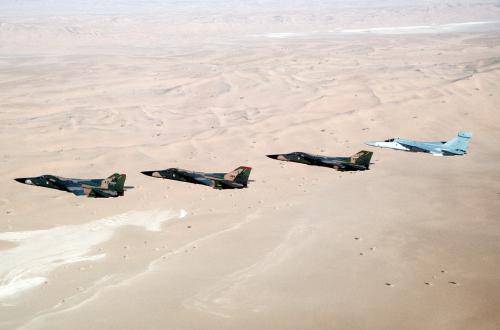
However, this rather large group failed to complete the task. Long before the Serbs, the Iraqis used a combination of short radar inclusions (about 10 seconds) with extensive use of radar simulators ("Sarab"). 19 January 1991, the Americans made a decisive massive attack on the air defense system Tuvayty - and for a couple of hours they were completely certain that they had completely suppressed it. However, the F-16C group from the 401 th wing (401st TFW), which attempted to bomb the center itself, to its inconceivable surprise, stumbled upon an ... unaffected air defense. As a result, one aircraft (board No. 87-0228) was shot down (the loss is recognized by the Americans). The rest of the F-16C could not break through to their goal.
Two days later, another group of F-16C tried to attack "Project 777" - in the same scenario. One aircraft was damaged and, according to American data, decommissioned after landing at the airport, the rest retired. As a result, January Americans used 22 on Tuva F-117 - with a radically different result. The anti-aircraft gunners, who proved their competence, were helpless, and the center was seriously destroyed.
In this case, story with the nuclear center - a bright but special case. Equally unsuccessful were the actions of non-stealth aviation against other well-protected objects. For example, during attacks on strategic bridges, more than a hundred sorties of classic aircraft ended in nothing - until the “invisible” were involved. In other words, the Iraqi anti-aircraft gunners showed good skills - however, they were powerless against the F-117. In this case, as a rule, “Nighthok” worked without engaging EW aircraft, since jamming could attract the attention of the enemy.
But what about long-wave radars? No way. The problem is that the “Eighteenth” were indeed more noticeable for long-wave radar compared to short-wave radar - however, “more visible” does not mean “well visible.” Practically, the radius of action of meter radars is still compressed almost an order of magnitude.
What about the "slingshot"? Yes, in the long career of the first “stealth” there was one case when he was shot down with the help of the archaic C-125. However, let us - for the sake of diversity - hear the Serbs themselves. The interview with Colonel Dani Zoltan, who shot down the F-117, leaves no room for demagogy - although the latter is still flourishing. So, what did the circumstances of the “hunt” look like?
Near the airbase in Italy, Serbian spies worked, tracking the ascent of the bombers. At the same time, the Americans, confident of their impunity, did not change their flight routes - the downed aircraft flew along the same route for the fourth time in a row. As a result, Colonel Zoltan was able to set up an ambush right on the “Night Hawk” path, while precisely knowing the time of flight. The result is known: the rocket was slapped literally at close range - at the time of its hit, the F-117 was only 13 kilometers from the launcher. However, even at this distance, the “invisibility” was discovered not by the old Soviet radar, but by a completely new thermal imager from Phillips, which was equipped with an anti-aircraft complex (“upgrade” mentioned in the interview).
A brilliant operation - but "piece". Having lost one car, the Americans, as expected, began to change flight routes - and the successes of the Serbian anti-aircraft gunners ended there. The “night hawk” was decommissioned nine years after the bombing of Yugoslavia, and the connection between the two events can only be seen with a very developed imagination.
Equally free-running chronology is also needed for the “limited edition of the Raptor” argument as a sign of disappointment in stealth — this aircraft was brought to the series after the 1999 of the year. It is hardly worth recalling that F-22 was “defeated” by another “stealth”, which is scheduled to be produced in thousands of copies.
In other words, in reality, the problem of “slingshots” is facing just “normal” airplanes - alas, but the quite modern “classic” is quite successfully being knocked down with the help of ancient anti-aircraft systems. When confronted with truly modern air defense, non-mustered aircraft are simply doomed. Stealth is not the Pentagon’s whim, but a key requirement for a modern aircraft. At the same time, the long-wave radars of the new generation, thermal imagers (for example, they are equipped with the new Swedish Grippen fighter), etc. few reduce the effectiveness of stealth technologies - but they do not make them useless.
- Evgeny Pozhidaev
- http://postsovet.ru"rel =" nofollow ">http://postsovet.ru

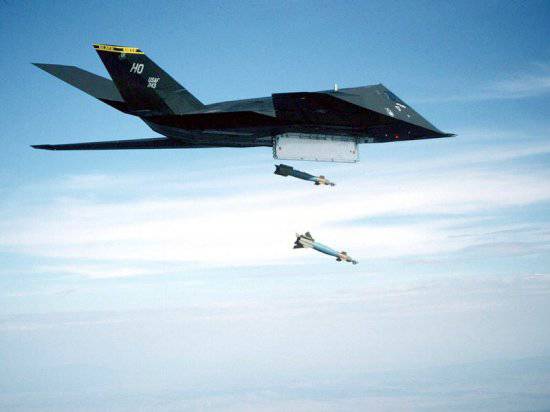
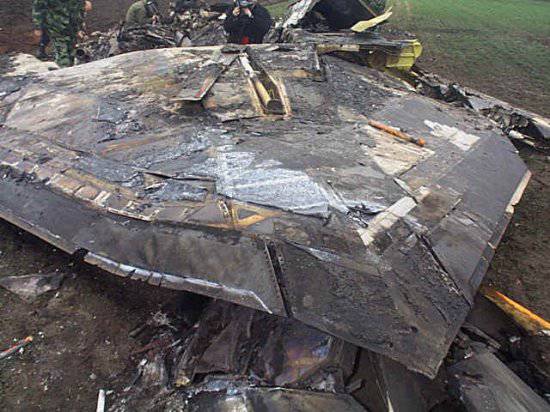
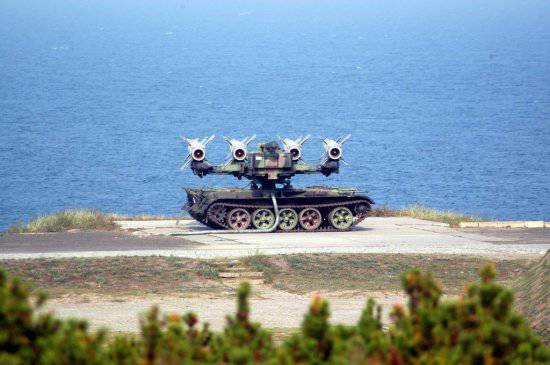
Information